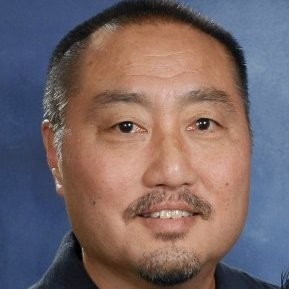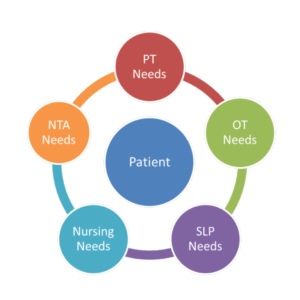Time to review the 2013 OIG work plan
A few days ago, the Office of Inspector General (OIG) announced, as a part of its Semiannual Report to Congress, that it expects recoveries to amount to $6.9 billion this year. (Yes, that’s “billion” with a “b”!) This impressive haul is a result of fraud investigation and audits. A portion of this came from the Medicare Fraud Strike Force, whose investigative efforts resulted in criminal charges against some 305 entities or people and 181 convictions (a conviction rate of over 59 percent).
With all these activities and recoveries, it’s no wonder that the OIG is continuing its aggressive efforts to identify fraud among healthcare providers. When you add the writ of qui tam or “whistleblower” provision, which allows people who are not affiliated with the government to file actions against federal contractors claiming fraud against the government, it makes for a daunting investigative force that’s not exactly friendly in the eyes of long-term care (LTC) providers.
What are providers to do? Well first, it should go without saying (but I’m going to say it anyway) that all providers must have an active and effective compliance program in place. If you don’t, drop whatever you’re doing right now and start putting one together. A good place to start is the OIG website, which can give you guidance on assembling your compliance program.
For the vast majority of you who already have a solid compliance program in place (good job by the way), it’s a good idea to review the OIG work plan. In October, the OIG released its 2013 work plan, which outlines the audit and enforcement initiatives for Medicare and Medicaid providers in the coming year. In reviewing this work plan, it gives providers some insight into the activities that the OIG is going to emphasize in the coming period and thus, gives providers guidance on areas to focus on in their compliance programs.
The Nursing Homes section of the work plan outlines eight initiatives that specifically address compliance risk areas for Medicare and Medicaid providers in the skilled nursing industry. Of these eight focus areas in the 2013 OIG work plan, there are three new projects:
STATE VERIFICATION OF DEFICIENCY CORRECTION
The OIG will seek to determine if the state survey agencies have verified correction plans for deficiencies identified during nursing home recertification surveys, as required by federal law. During a prior OIG survey, it was discovered that a state survey agency did not conduct this verification.
USE OF ATYPICAL ANTIPSYCHOTIC DRUGS
The use of antipsychotics on LTC residents has received a substantial amount of legislative and regulatory attention recently. The OIG will conduct assessments of the administration of these drugs and such assessments will include the percentage of residents receiving these drugs as well as the types of drugs most commonly received.
OVERSIGHT OF THE MINIMUM DATA SET SUBMITTED BY LTC FACILITIES
The MDS is a key component of nursing home billing and therefore it is no surprise that the OIG will focus on the data submitted by providers as a part of the MDS. Specifically, the OIG will analyze the accuracy and completeness of the MDS data submitted by skilled nursing providers.
The remaining five projects are holdovers from last year and you should be familiar with them. (And if you’re not, shame on you and start reading very carefully!)
ADVERSE EVENTS IN POST-ACUTE CARE FOR MEDICARE BENEFICIARIES
The OIG will continue to estimate the national incidence of adverse and temporary harm events but also identify contributing factors to these events, determine if these events were preventable, and also estimate associated costs.
MEDICARE REQUIREMENTS FOR QUALITY OF CARE IN SKILLED NURSING FACILITIES
Prior OIG reports showed that approximately 25 percent of residents’ needs for care were not reflected in care plans, so the OIG will continue to determine the extent to which skilled nursing facilities use Residential Assessment Instruments to develop care plans.
OVERSIGHT OF POORLY PERFORMING FACILITIES
Enforcement decisions by CMS and states as a result of surveys and complaint allegations will continue to be examined by the OIG in association with poorly performing nursing homes.
HOSPITALIZATIONS OF NURSING HOME RESIDENTS
This has been a hot button issue, and a 2007 OIG review uncovered that 35 percent of hospitalizations during a SNF stay were a result of poor quality of care or unnecessary fragmentation of services. Consequently, the OIG will determine if hospitalizations were due to manageable or preventable conditions.
QUESTIONABLE BILLING PATTERNS FOR PART B SERVICES DURING NURSING HOME STAYS
As part of Congress’ directive to monitor Part B services for abuse, the OIG will continue to look at billing patterns associated with Part B services.
Now that you know what the OIG is looking at in the coming year, it’s time to go back and take a thoughtful look at your current compliance program. If your program isn’t specifically addressing these eight areas, it’s time to get to work and fine-tune your program. With all the money and convictions at stake, the OIG isn’t going anywhere and your compliance program can be a valuable tool in insuring that you don’t become an OIG statistic next year.

Craig T. Fukushima, NHA, is partner at The Fox Group, a consulting practice that serves a wide range of acute and post-acute healthcare providers. He has worked in the LTC industry for more than 30 years, starting as a skilled nursing facility administrator and later as operations vice president. He hosts a Twitter discussion (second Tuesday of every month at noon EST) on issues related to Alzheimer’s disease at #talkalz.
Related Articles
Topics: Facility management , Regulatory Compliance










